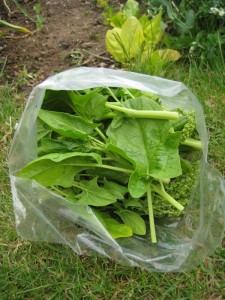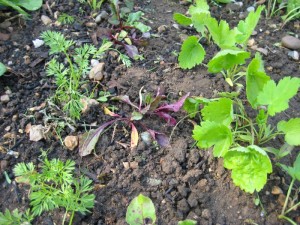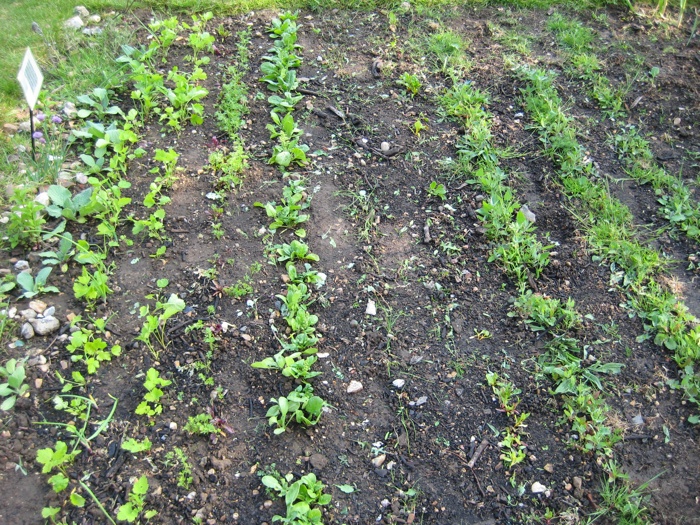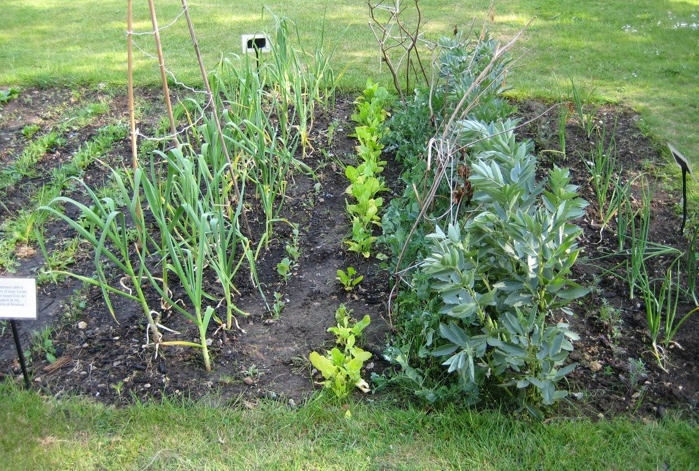The over wintered Spinach planted back in the Autumn has gone to seed. On 20/05/2010 the first harvest was cut, producing one bag of flowering Spinach weighing 10oz or 260 grams. The Spinach on the Plot will be left for a week or so to see if more can be harvested or if the plants need to be dug up to reclaim the area for further planting. 
Weeding can be an intricate and time-consuming activity. Rows of wanted vegetable seedlings can grow surround by an assortment of unwanted weed plants. Weeds are generally unwanted plants growing in a cultivated area. In an organic vegetable growing situation hand weeding is a very important thing and the easiest way to get rid of the weeds. There is a big difference in green manures used to fertilize the soil for growing vegetables to unwanted weeds growing with the vegetables. Having too many weeds amongst the vegetables is generally not a good thing. Weeds compete for nutrients and moisture, they can also over run a plot. When it comes to harvesting, in the vegetable business world, weeds showing up amongst the crop are normally removed to appease the consumer. However there is a place for weeds in relation to the growing environment, unweeded areas that will not interfere with crops can also attract all kinds of biodiversity that can assist in the growing process. Stinging nettles are particularly useful. Many weeds may have all kinds of beneficial properties to the human diet, however some weeds can be harmful if digested or an irritant to the skin, identifying what plant properties are and knowledge is the key.
On the Allotment Plot removing the weeds from around the seedlings revealed the young and tender plants. The shield of protection that the weeds may have given to the seedlings will be observed on further visits to the Plot. The vegetable seedlings that emerged were Parsnips, Carrots, Beetroots, Chard, Leeks and Red Onions. A hesitation was apparent when it came to remove the weeds around the Brassica seedlings, which had already been damaged by hungry predators. The hesitation lasted about 22 hours and then on returning to the Plot the weeds were removed. If the Brassicas can survive is an unknown factor. The Kale Red Russian Curled seedlings and Lettuce Marvel of the Four Seasons are both naturally red pigmented and seem to be growing better perhaps for that reason, this suggests that it may not be pigeons that are feeding on the Brassicas, so perhaps slugs and snails could be the assailants.
After weeding activity, the Plot progresses to watering, in order to alleviate the drought conditions. Water was gathered into the watering can from the tap, carried to the Allotment Plot and poured onto the parched soil. At least six full watering cans were used in drought alleviation.
A triangle of bamboo canes was forced into the ground and tied with string to produce some stability. Near each bamboo cane was planted two organic French Bean (Climbing) Blauhide seeds and two French Bean (Climbing) Blue Lake seeds. A row of twelve Sweetcorn Golden Bantam seeds were planted near the over wintered Onion sets and a row of twelve French Bean (Dwarf) Royalty seeds was also planted. There is no sign as yet of the Wild Rocket seedlings, the Lettuce Lollo Rosso or the White Lisbon Spring Onions.


